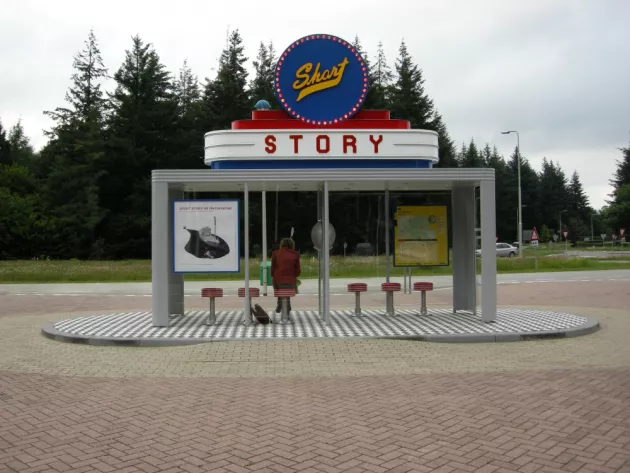The surprising art of the short story
Published on 10th February 2021

I was given a book by Zadie Smith called Grand Union. I hadn’t read anything by her before but heard she was good. By the third chapter I was totally bamboozled. I was thinking - what’s going on? What are they all doing beside a swimming pool?
I closed the book to read the blurb only to discover it was a book of short stories. I was two stories in and I didn’t know, always read the blurb! Before the 19th century the short story was not generally regarded as a distinct literary form. In this sense it may seem to be a uniquely modern genre, the fact is that short prose fiction is nearly as old as language itself.
What is a short story?
A short story is a work of prose fiction that can be read in one sitting. There is no maximum length, but the average short story is 1,000 to 7,500 words, with some outliers reaching 10,000 or 15,000 words. At around ten to twenty-five pages, that makes short stories much shorter than novels, with only a few approaching novella length. A piece of fiction shorter than 1,000 words is considered a “short short story” or “flash fiction,” and anything less than 300 words is called “micro fiction.”
What are the key elements of a short story?
The setting of a short story is often simplified (one time and place), and one or two main characters may be introduced without full backstories. In this concise format, every word and story detail has to work extra hard!
Short stories typically focus on a single plot instead of multiple subplots, as you might see in novels. Some stories follow a traditional narrative arc, with exposition at the beginning, rising action, a climax, and a resolution at the end. However, contemporary short fiction is more likely to begin in the middle of the action, drawing readers into a dramatic scene.
While short stories of the past often revolved around a moral lesson, today it is common to find stories with ambiguous endings. This type of unresolved story invites open-ended readings and suggests a more complex understanding of reality and human behaviour. The short story genre is well suited to experimentation in prose writing style and form.
I pushed myself out of my comfort zone to read a book that a dear friend gave me. It had an intriguing title, Her Body and Other Parties by Carmen Maria Machado. I immediately knew it wasn’t my kind of thing but I persevered as I wanted to talk to my friend about it. It’s fabulously written, each story pulls you in and spits you out, with fantastic imagination which echoes the edginess of Shirley Jackson and adult fairy folk tales.
I was glad I stuck with it and it’s good to go the extra mile for a friend and a good conversation. I loved The Long Gaze Back edited by the great Sinead Gleeson, she has a new one out The Art of The Glimpse which I think is a brilliant title for a short story collection but I haven’t read it yet, and I loved her book of essays Constellations.
I find the short story to be a funny genre as a read. Sometimes it’s like an insubstantial sandwich when you’re very hungry, sometimes it’s like a beautifully prepared omelette and will occupy your thoughts throughout the day. I recently discovered Elizabeth Bowen, her writing fits the art of the short story perfectly.
If you’re lacking in the concentration stakes at the moment try one of these as a bed time read, be warned the Machado might give you nightmares!
Access eBooks/eAudiobooks on your phone, tablet or reader. Once you have installed the app, search for Dublin in the ‘Library’ field provided and then sign in using your library membership card number and PIN. Watch our how to video on Borrowbox. Members of other library authorities will need to log in using a different link.
Submitted by Eileen in Dolphin's Barn library.